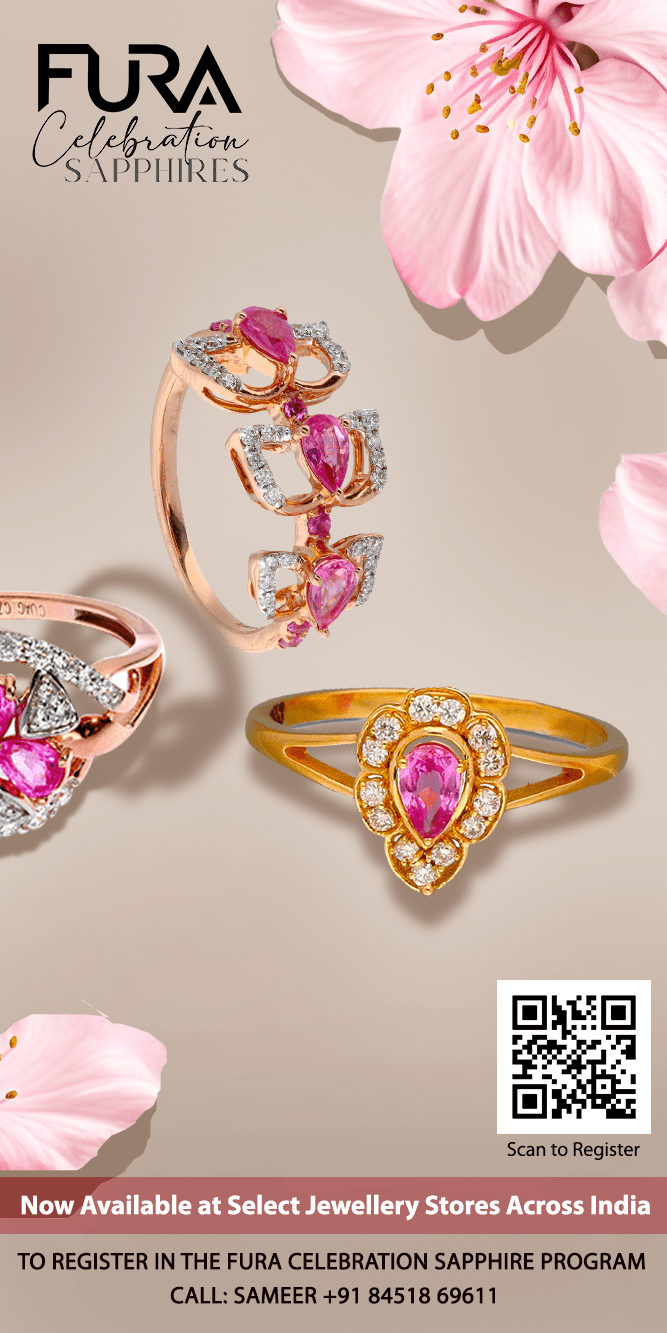Featured Interview
Jewels of the Screen

Shree Paramani Jewels’ partnership with filmmaker Sanjay Leela Bhansali for the Netflix series ‘Heeramandi’ sets new trends and further boosts the demand for vintage craft in precious jewellery
By recreating 200-year-old jewellery designs using traditional techniques and real precious metals, Shree Paramani Jewels has positioned itself as a premier choice for historically authentic jewellery for the entertainment industry. Founder Vinay Gupta discusses the entire process and backstory of crafting large quantities of real jewellery for ‘Heeramandi’ with The Retail Jeweller.
“The visibility and prestige gained from this project have significantly benefitted our mainline business. However, this collaboration is not purely to enhance our brand image; our reason for doing this is also our love for creating beautiful jewellery”
– Vinay Gupta, Director, Shri Paramani Jewels
Maithili Patange (MP): How has the collaboration with Sanjay Leela Bhansali on ‘Heeramandi’ enhanced Shree Paramani Jewels’ brand image and benefitted your mainline business?
Vinay Gupta (VG): This high-profile association has positioned us as a preferred choice for authentic, period-specific jewellery. The visibility and prestige gained from this project have significantly benefitted our mainline business by attracting customers who value craftsmanship and historical authenticity, substantially increasing our footfall.
MP: Given the usual practice of using fake jewellery in film and television, you used real jewellery in silver and gold for ‘Heeramandi’. How did you plan this process?
VG: The primary task was to create historically accurate jewellery that aligned with the narrative’s era requiring deep planning and research to ensure the jewellery pieces were period-specific. The jewellery used in the series is crafted from precious metals, including silver and gold, with polki, jadau, rose-cut diamonds, pearls, rubies and emeralds. The total metal weight used in the 10,000 pieces exceeded 300 kg.
MP: Elaborate on the techniques and challenges of creating designs using 200-year-old jewellery-making styles for ‘Heeramandi’.
VG: The jewellery pieces were handcrafted using techniques such as kundan, meenakari, and jadau without using any castings. We have also used Pajeb designs which are not commonly used now. A major challenge was sourcing skilled artisans capable of replicating these historical styles accurately.
MP: You have released a special collection based on the designs used in ‘Heeramandi’. How is the response so far?
VG: Yes, we have launched a collection named ‘Dastaan-e-Heeramandi’ as a tribute to the mystical lives of tawaifs which has already garnered significant interest. It has also helped us increase our social media following by hundreds. We are selling the same pieces used in the movie to the customers; some popular designs are also being made again.
MP: What marketing strategies have you implemented to leverage ‘Heeramandi’ for enhancing your brand’s visibility?
VG: We implemented social media campaigns showcasing the ‘Heeramandi’ jewellery, and educational videos detailing the jewellery used in the series. My wife Anshu and I engage with our audience on social media, sharing our journey with ‘Heeramandi’ which receives the highest engagement and likes.
MP: How are the pieces from the series priced compared to your standard collections? Can you command a significant premium on these compared to your other jewellery?
VG: The ‘Heeramandi’ jewellery pieces are not priced at a premium compared to our standard collections, as we do not believe in capitalising on glamour. Each piece is priced based on the type of stones and materials used. Some of our favourite designs include pieces with peacock motifs, the Ajmeri necklace, Indori designs, a lotus choker, and a jade necklace with Burmese rubies.
MP: What were your primary challenges while producing the 10,000 jewellery pieces for ‘Heeramandi’, and how did you overcome them?
VG: The primary challenges included sourcing the right materials, ensuring historical accuracy, and coordinating with a large team of artisans in their respective techniques like piroi, jadau, meenakari, etc. To overcome this, we streamlined the production process by setting up dedicated workshops and employing specialised craftsmen. One major lesson we, as a brand, have learned from this project is maintaining the quality while adhering to deadlines to ensure timely completion without compromising on standards.
MP: You have previously worked with Sanjay Leela Bhansali and other creators, and with ‘Heeramandi’, you have created a niche for yourself. How do such collaborations fit into your long-term business strategy?
VG: These collaborations are not purely to enhance our brand image. Putting so much effort into creating such exquisite pieces is too much work to do just for glamour and brand name. Our reason for doing this is a pure love for creating beautiful jewellery. However, collaborations with series and movies have undoubtedly been beneficial, enhancing our market presence and customer base.
“Bollywood significantly influences trends in India. The designs from ‘Heeramandi’ are expected to inspire new trends in the jewellery market. For example, the ‘paasas’ or headgear jewellery trend is back due to ‘Heeramandi’”
MP: Bollywood is known to create trends in India. Do you think these designs will inspire new trends? Are you already seeing this happen?
VG: The trend of ‘paasas’ or headgear jewellery is back due to ‘Heeramandi’. These ‘paasas’ were used long ago, but now we see a mass demand for them, with customers purchasing them for their functions. The trend of big naths (nose rings) is also seen in our store. Customers want to buy the naths with chains as seen in the series.
Written by Maithili Patange

 Daily News4 weeks ago
Daily News4 weeks ago#LoveFromDad: De Beers unveils second ear-piercing drive to spur natural diamond demand among young consumers

 Exclusive3 weeks ago
Exclusive3 weeks agoUS tariff storm hits India’s gem & jewellery industry; faces major disruption threat, 1 million jobs at risk

 Wide Angle2 weeks ago
Wide Angle2 weeks agoTitan brings together Tanishq, Titan Watches and Titan Eye+ at first multi-brand store in the UAE

 Wide Angle1 month ago
Wide Angle1 month agoSaashri Jewellers ropes in actor Samantha Ruth Prabhu for grand opening of new store in Sydney





























